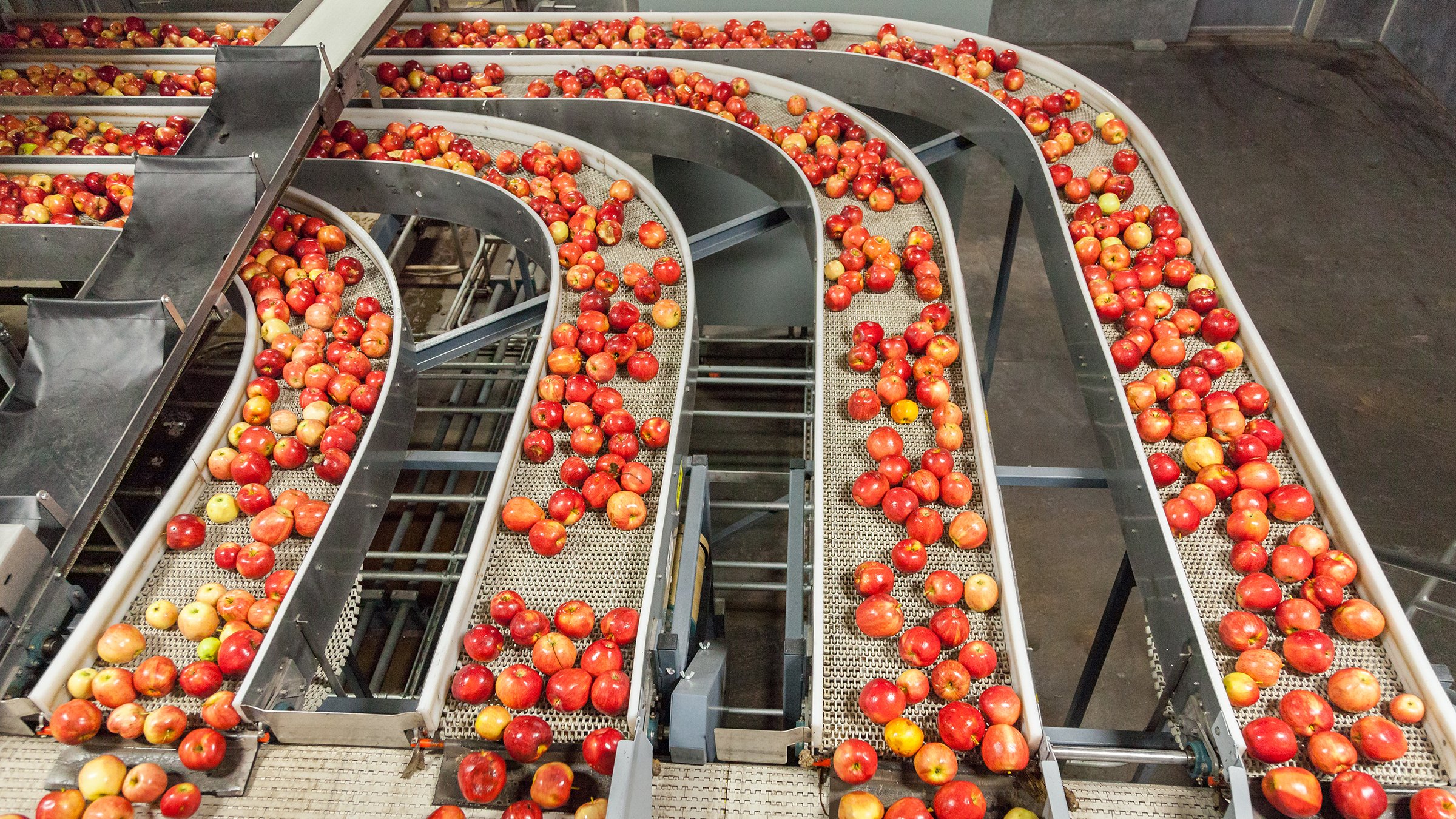Challenge
Analyze multiple scenarios to increase sortation system’s performance
Solutions
A model was built to represent the sortation system, input conveyor, and exit conveyor.
Results
- Implementation of a combined sensor and timer based release system
- The combination alternative has proven 95% to 98% effective in meeting the system’s objective of an enhanced packaging process flow
Background
A large packaging system company in Glasgow, Kentucky, produces continuous, plastic-chain, curving conveyors used primarily for food production. In addition to conveyor systems this packaging company also produces a complete line of transfers for handling products at the start and end points of the conveyor. Conveyor systems running an optimal packaging process flow is imperative to the product’s success.
Challenge
A food sortation system developed by this packaging manufacturer was designed to take a random stream of frozen pies from a wide belt conveyor and manipulate the packaging process flow to generate a single file output- without pies colliding during the process. The sortation system, already installed at a client’s site, was not meeting three key performance criteria:
- No pie collisions
- Meet a maximum input rate of 50 pies per minute
- Create a 17-inch distance between pie centers upon exit
Solution
Since the system had been installed already and was in operation on a daily basis, the Rockwell Automation Arena consulting team was called to build a model using Arena packaging optimization software. Simulating a packaging process flow model to vary the current system would allow the packaging manufacturer to conduct analysis without disturbing the actual system or building costly prototypes.
The model was built to represent the sortation system, input conveyor, and exit conveyor. The Arena model was constructed to allow selection between two types of release mechanisms, one which was timer-based and another which was sensor-based. An animation of the packaging prcoess flow was developed in Arena so that analysts could observe the movement of pies and and keep track of vital statistics during the course of the run.
Results
The packaging optimization model was used to test a strictly sensor base system, a timer-based system, and a combination of the two. the third option was selected because, during simulation runs, the sensor-based system increased the number of high velocity pie collisions that occurred, and the timer-based system built up too many queues inside the sortation system. The combination alternatively brought together the best of the first two options and has proven 95% to 98% effective in meeting the system objectives.
Published 2014년 7월 31일
Ready to Order Your Software?
Recommended For You
